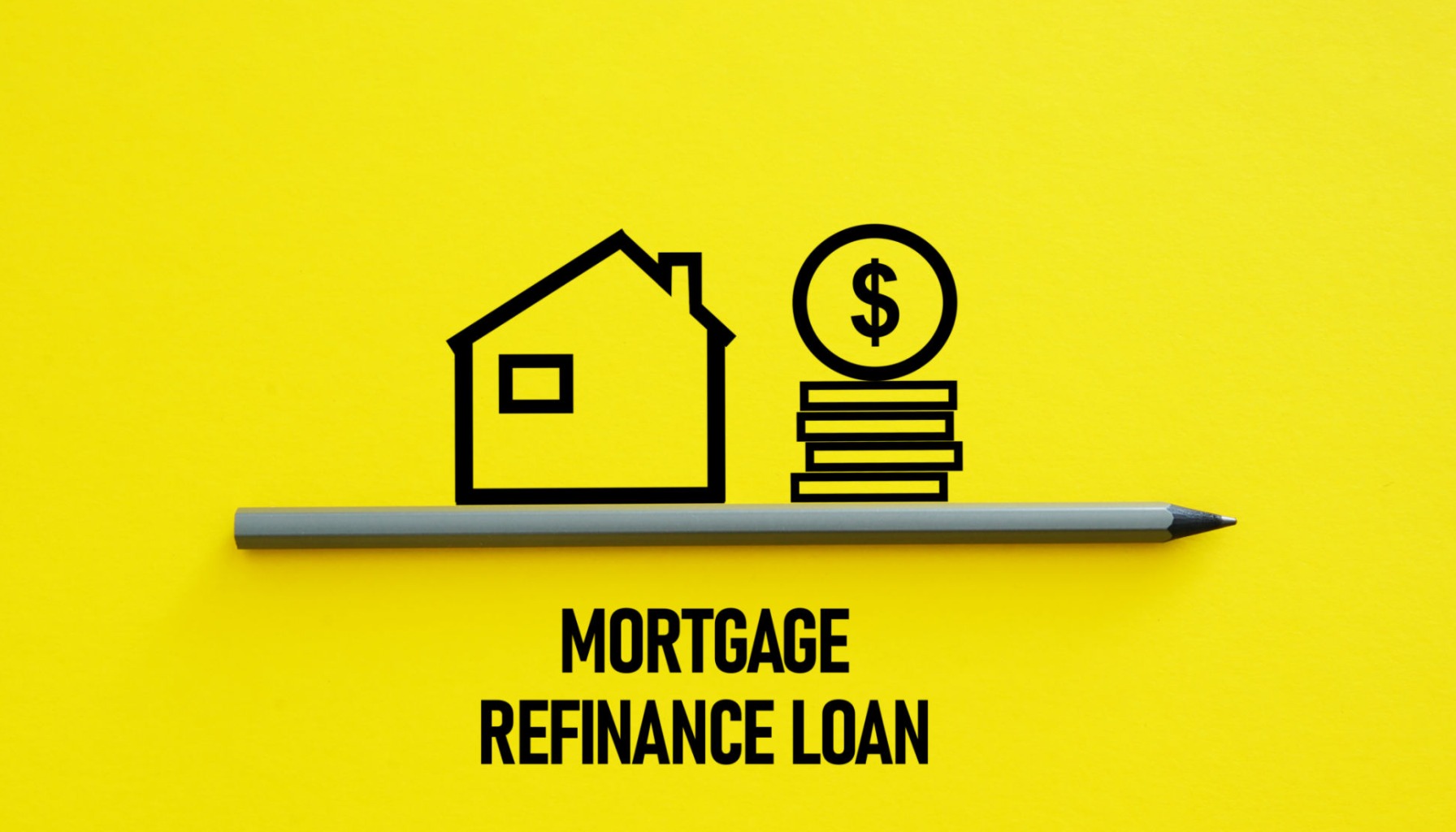This is a question on a lot of minds right now: what are mortgage rates today? And more specifically, if you're thinking about refinancing your home, you might have noticed that the national 30-year fixed refinance rate has seen a slight uptick. According to Zillow's latest data, the average rate on Monday, September 29, 2025, has moved down to 7.10%. While this is a tiny dip from 7.12%, it’s important to note that it stands 7 basis points higher than the previous week's average of 7.03%. This means that while the big picture might be shifting, even small movements can affect your wallet. Let's dive deeper into what's causing these changes and what you can expect.
Mortgage Rates Today: 30-Year Fixed Refinance Rate Rises to 7.10% on September 29, 2025
Here’s a look at some of the key rates we're seeing:
| Interest Rate Type | Rate (as of Sept 29, 2025) | Change from previous week | Notes |
|---|---|---|---|
| 30-Year Fixed Refinance | 7.10% | Up 7 basis points | Slightly higher than last week. |
| 15-Year Fixed Refinance | 6.04% | Up 2 basis points | Also seeing an increase. |
| 5-Year ARM Refinance | 7.44% | Up 2 basis points | Adjustable-rate mortgages are also trending up. |
| 10-Year Treasury Yield | 4.176% (as of Sept 26, 2025) | N/A | Benchmark rate for mortgages. |
The Federal Reserve's Big Move and Its Ripple Effect
One of the biggest stories impacting interest rates lately has been the Federal Reserve's decision. On September 17, 2025, they made their first move of the year to lower borrowing costs. They cut their benchmark interest rate by a quarter percentage point. Think of the benchmark rate as the Fed's main tool to influence how much it costs for banks to borrow money, which then trickles down to us.
This cut came after a pause where the Fed held steady for five meetings in 2025, following a few earlier cuts in late 2024. It signals a shift in their thinking about the economy.
Why the Fed Cut Rates: A Balancing Act
Why would they cut rates when economic growth is still pretty solid? It's a tricky balancing act.
- Inflation: Even though they want to lower borrowing costs, inflation is still a concern. The Fed's favorite measure of inflation, the core PCE price index, was up 2.9% year-over-year in August. That's still higher than their goal of 2%.
- Economic Growth: On the flip side, the economy is showing strength. Real GDP, which is a broad measure of economic activity, grew at a strong 3.8% annualized rate in the second quarter of 2025.
So, you have a situation where the economy is growing well, but inflation is proving a bit stubborn. The Fed has to try and cool down inflation without stalling the economy, a task that requires careful navigation.
How the Fed's Actions Connect to Your Mortgage Rate
Now, you might be wondering, “How does the Fed's decision affect my mortgage rate?” It’s not a direct link, but it's a strong indirect one. The Fed's benchmark rate influences something called the 10-year U.S. Treasury yield.
Think of Treasury yields as a kind of benchmark for longer-term borrowing costs across the economy. The 10-year Treasury yield is particularly important because it’s the main guide for pricing 30-year fixed-rate mortgages.
Here's how it works:
- The Benchmark: Lenders look at the 10-year Treasury yield when deciding what to charge for a 30-year mortgage. This makes sense because, on average, people tend to have their mortgages for a duration similar to 10 years.
- Investor Appeal: When investors buy mortgage-backed securities (which are bundles of mortgages that are sold to investors), they need to get returns that are competitive with super-safe investments like Treasury bonds.
- The “Spread”: Mortgage rates are usually higher than the 10-year Treasury yield. This difference is called the “spread,” and it’s there to cover the extra risks lenders take on. Lately, this spread has been wider than usual, meaning mortgage rates are higher than they might otherwise be, even when Treasury yields are falling.
As of September 26, 2025, the 10-year Treasury yield was at 4.176%. While this has come down since the Fed's cut, that wider spread is a key reason why mortgage rates haven't dropped as dramatically as some might have expected.
What This Means for Mortgage Rates Right Now
The Fed's rate cut has had a moderating effect on rates. However, because of that wider spread, the impact on mortgage rates has been pretty modest. This is why we're seeing the 30-year fixed refinance rate hover where it is.
My take on this is that the Federal Reserve is signaling a move towards lower interest rates over time, which is good news. If the gap between Treasury yields and mortgage rates shrinks back to where it normally is, we could see mortgage rates edge lower. It’s even possible we could see rates dipping below 6% sometime in 2026.
However, we need to be cautious. If inflation starts climbing again, the Fed might have to pause or even reverse course on rate cuts, which would put upward pressure on mortgage rates again.
Looking Ahead: What's Next for Housing?
So, what does this all mean for you, whether you’re looking to buy, sell, or refinance?
For Home Buyers
Even small decreases in mortgage rates can make a difference in monthly payments. With rates at their current level, affordability is better than it was a few months ago. However, that wide spread is still a factor, so be sure to shop around for the best rate. In areas with limited homes for sale, competition can still be fierce, driving up prices.
For Home Sellers & Inventory
As mortgage rates become a little more manageable, some homeowners who were previously “rate-locked” (meaning they don't want to lose their current low rate) might feel more comfortable listing their homes. This could lead to more homes on the market. But if there are more buyers than new homes available, prices could continue to climb.
Recommended Read:
30-Year Fixed Refinance Rate Trends – September 28, 2025
Key Things to Watch
The Fed is going to keep a close eye on economic data. Here’s what I’ll be watching, and what you should too:
- Inflation Reports: The next reports on inflation (PCE and CPI) will be crucial to see if prices are steadily coming down.
- Job Market: If job growth continues to slow, it might give the Fed the confidence to cut rates again.
- The Spread: As I mentioned, the gap between Treasury yields and mortgage rates is a big deal. When this gap narrows, we should see more significant drops in mortgage rates.
Why This Matters for Your Bottom Line
- If You're Buying: The market is more welcoming now than it was recently. Make sure you're comparing offers from different lenders and understand what influences the rate you’re given.
- If You're Refinancing: If your current mortgage rate is above 6.5%, it's definitely worth exploring refinancing options. The improved rate environment might mean you can save money on your monthly payments.
- If You're Just Watching: The road to lower mortgage rates will likely be a gradual one. The fact that the spread is still wide means lenders and investors are still factoring in risk, so mortgage rates will probably stay higher compared to Treasury yields for some time.
Ultimately, understanding these trends can help you make smarter financial decisions.
Maximize Your Mortgage Decisions
Thinking about whether to refinance now? Timing is critical, and having the right strategy can save you thousands over the life of your loan.
Norada's team can guide you through current market dynamics and help you position your investments wisely—whether you're looking to reduce rates, pull out equity, or expand your portfolio.
HOT NEW LISTINGS JUST ADDED!
Talk to a Norada investment counselor today (No Obligation):
(800) 611-3060
Recommended Read:
- When You Refinance a Mortgage Do the 30 Years Start Over?
- Should You Refinance as Mortgage Rates Reach Lowest Level in Over a Year?
- NAR Predicts 6% Mortgage Rates in 2025 Will Boost Housing Market
- Mortgage Rates Predictions for 2025: Expert Forecast
- Half of Recent Home Buyers Got Mortgage Rates Below 5%
- Mortgage Rates Need to Drop by 2% Before Buying Spree Begins
- Will Mortgage Rates Ever Be 3% Again: Future Outlook
- Mortgage Rates Predictions for Next 2 Years
- Mortgage Rate Predictions for Next 5 Years
- Mortgage Rate Predictions for 2025: Expert Forecast



